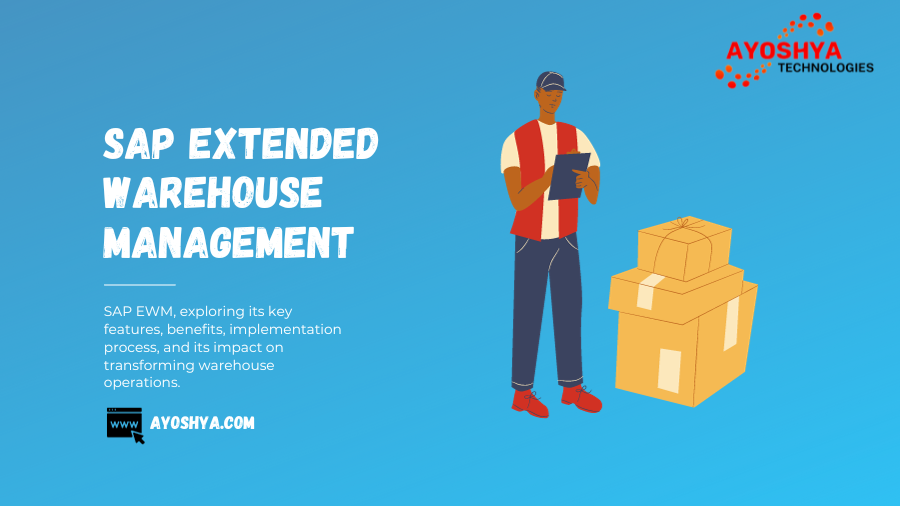SAP Extended Warehouse Management
Introduction to SAP Extended Warehouse Management (EWM)
In the dynamic landscape of warehouse management, SAP Extended Warehouse Management (EWM) stands out as a powerful solution that goes beyond the traditional boundaries of warehouse systems. This article will delve into the intricacies of SAP EWM, exploring its key features, benefits, implementation process, and its impact on transforming warehouse operations.
Key Features and Capabilities of SAP EWM
SAP EWM brings a host of features to the table, providing real-time visibility into warehouse operations, advanced slotting capabilities for optimized storage, efficient labor management, and seamless integration with other SAP modules. These features collectively empower businesses to manage their warehouses with unprecedented efficiency and accuracy.
Benefits of Implementing SAP EWM
The implementation of SAP EWM translates into tangible benefits for businesses. Improved inventory accuracy ensures that businesses have a real-time understanding of their stock levels. Enhanced order fulfillment capabilities contribute to increased customer satisfaction, while overall warehouse efficiency sees a significant boost.
SAP EWM vs. Traditional WMS
Comparing SAP EWM with traditional Warehouse Management Systems (WMS) reveals a paradigm shift in functionality. SAP EWM’s real-time capabilities, advanced analytics, and integration possibilities set it apart, offering a comprehensive solution for modern warehouse management needs.
Implementation Process of SAP EWM
Implementing SAP EWM involves a systematic process. From initial assessment and planning to system configuration, customization, and user training, each step is crucial for the successful adoption of this advanced warehouse management solution.
Common Challenges in SAP EWM Implementation
While the benefits are substantial, challenges can arise during the implementation of SAP EWM. Addressing integration complexities, data migration issues, and change management hurdles proactively is essential for a smooth transition to this advanced system.
Optimizing Warehouse Processes with SAP EWM
SAP EWM opens doors to further optimization of warehouse processes. Integrating automation and robotics streamlines routine tasks, while analytics provide insights for continuous performance improvement. The result is a warehouse that operates with unprecedented efficiency.
Success Stories: Real-world Examples
Real-world success stories highlight the transformative impact of SAP EWM. Companies across various industries have experienced enhanced efficiency, improved order accuracy, and streamlined warehouse operations after implementing SAP EWM.
Future Trends in Warehouse Management Technology
Looking ahead, the future of warehouse management technology involves the integration of artificial intelligence (AI) and machine learning. Predictive analytics and IoT applications are set to further revolutionize the way warehouses operate, ensuring even higher levels of efficiency and adaptability.
Conclusion
In conclusion, SAP Extended Warehouse Management emerges as a game-changer in the world of warehouse operations. Its advanced features, seamless integration, and potential for optimization position it as a cornerstone for businesses aiming to excel in their supply chain management.
Frequently Asked Questions
- Is SAP EWM suitable for small businesses?
- Yes, SAP EWM can be scaled to meet the needs of businesses of all sizes.
- How long does it take to implement SAP EWM?
- The implementation timeline varies but typically ranges from a few months to a year, depending on the complexity of the business processes.
- Can SAP EWM be integrated with other SAP modules?
- Absolutely. SAP EWM is designed for seamless integration with other SAP modules like SAP ERP.
- What industries benefit the most from SAP EWM?
- Industries with complex supply chain and warehouse management needs, such as retail, manufacturing, and logistics, benefit significantly from SAP EWM.
- Is training provided for SAP EWM users?
- Yes, comprehensive training is a crucial part of the implementation process to ensure users can leverage the full capabilities of SAP EWM.
You may be interested in:
SAP S/4HANA – Transforming Logistics



